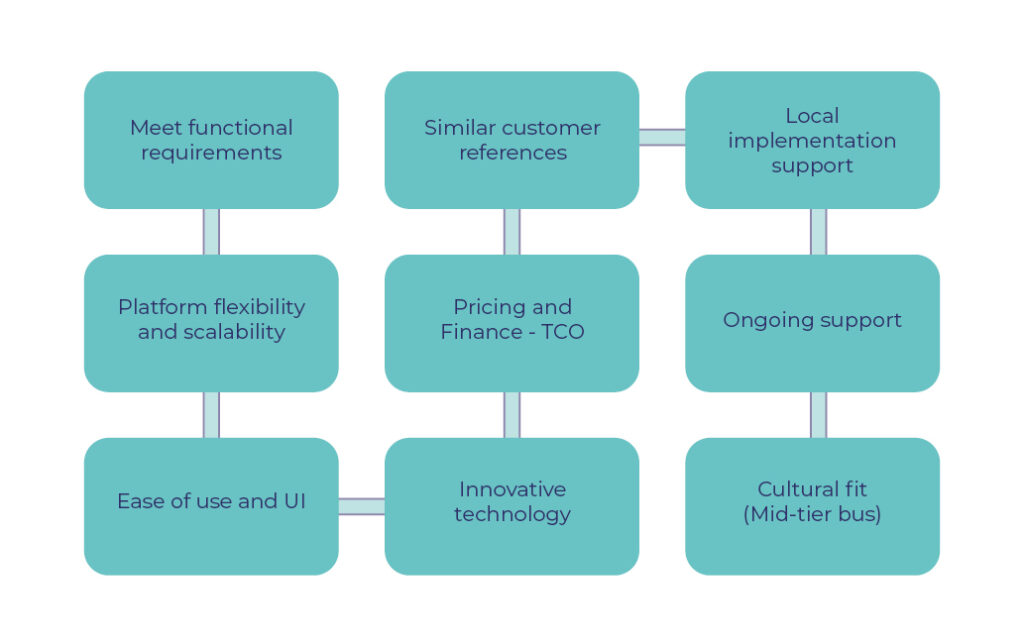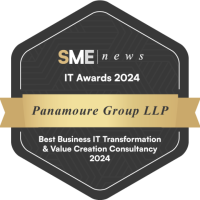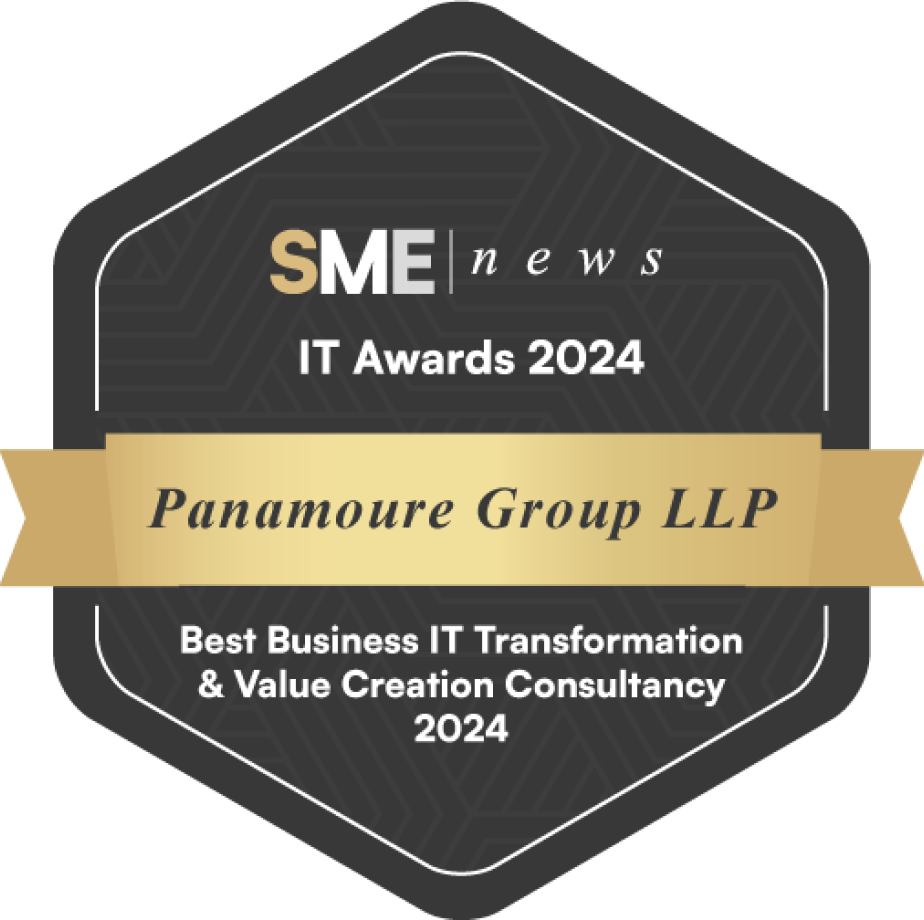You’ve decided you need an ERP. You’ve built your business case. You’ve secured the buy-in of your senior team and peers and now you need to press ahead and look at getting this show on the road.
At this point, it’s useful to review and revisit what the business need is right now, so it can solve immediate problems and issues but also include what’s possible and where the business intends to be in 3-5 years. This will help you to draw up a hypothetical product specification.
Some features will be more critical and important to the performance and growth of your business compared to others. Look at what parts of your “vision” will have the greatest impact now and in the future, what are the “must-haves” and what are the “nice to haves”. These lists will be a great yardstick to measure and evaluate proposals from vendors.
But beware…..It’s unlikely you’ll find an ERP solution that ticks all your boxes. Many vendors will advise you that their solution can cover ALL your wants and needs…but fail to say that this is post expensive customisation or adding one or more further applications to be integrated. It’s vitally important that you identify the most “challenging” and “business critical” areas in which the ERP has to be competent. It’s these areas that you HAVE to ensure are walked through as part of your prospective vendors’ eventual demonstration of their respective systems.
It’s also important to consider the everyday heavy use of your ERP – how it’s going to be used 90% of the time.
You should think about the following high-level basics:
- Hosting — do you want a solution that’s based in the Cloud or will you house this on your servers in-house? If you want your ERP on-premise, hardware costs will need to be budgeted for as well as ongoing maintenance. You’ll also need to factor in the additional utility cost to power this and staff to implement and run it. You will also need to assess your data security as you’ll likely need to upgrade this. If you choose the Cloud, you will (as odd as it may seem to have to point out) have to ensure you have sufficient bandwidth.
- Accessibility — Will people need to access this outside of your offices or remotely? What are your compatibility needs? What are the risks?
- Scalability — can it be scaled and rolled out across your operation domestically and globally? How will this impact people and also the future capability of the system?
- Integrations — are there any current or anticipated systems or products that you need the ERP to integrate with?
- Vendor support — what’s your in-house capability like when it comes to long term maintenance? How do you want to receive support from your chosen vendor? Are you happy with remote working or do you need someone local who can visit your office and be on hand to drop in when needed?
- Training — do you need your vendor to do this?
What are your options?
You have your ERP criteria in one hand and now it’s time to begin choosing a system – so where to start?
You’ll have done your desk research (and/or potentially worked with a solution you liked or disliked) in the past. Either way, how do you ensure you choose the right system?
There are two options, a full-blown RFP or a “light” RFP.
In the last piece, we discussed the need to; Analyse your AS-IS and TO-BE process flows, document your high-level requirements and separate what your business “wants” from what it “needs” (the Discovery Phase). Hopefully, you used a partner (such as Panamoure!) to create artefacts that can be used for the next part of the process.
If you are in the Small-Mid Cap market with few legal entities, operate in a single geolocation and (most importantly) have a relatively simple business model, then it’s possible you already have enough information from your Discovery Phase to begin talking to vendors.
However, if you have a more complicated business model then it’s likely you will need to begin a full RFP process. This is where your Partner from the Discovery Phase will be key as it’s likely they’ve worked with many of the players, they can advise on “potential” solutions and so can give you an early steer on who to put on the shortlist and then the level of detail required.
To be super clear on the nomenclature we’re using in this piece – a “Software Vendor” (SV) is the system provider and a “Solution Implementor” (SI) is the partner who will implement the system into your business. The next instalment of the ERP diaries will go further into this!!
So what’s an RFP “light”:
- Uses the results from your Discovery Phase
- Straight to “Demo” – post sharing these results/requirements with the SI
- Less costly, quicker route to a decision
- Potentially riskier – if the Discovery results are not complete or not captured all of the business complexity
…and a full RFP?
- Requires much deeper, further requirements/business process gathering – post the Discovery
- Much more time is required to get to the point of sharing these requirements with SI
- The SI will need more time to evaluate the requirements and create a proposal
- Costly in comparison to the RFP light, from a time and money perspective
- Can take up to 3 months for a Mid-Cap business…to twice as long for a larger organisation (and in some cases even longer)
Typical evaluation criteria

A reputable SI will put together a proposal tailored to your business needs and set up sessions to walk you through the process and demo/s of the selected solution. It’s important to factor in this “shopping stage” into the programme and give yourself time and, where you can, use a trial to get a feel for the different systems. And where you can, use trial and get a feel for the different systems. You’ll be surprised how often your choice will be based on the “look and feel” of an ERP!
Much of this phase will involve a pros and cons list and evaluating how a specific solution measures up against your specifications. It’s also important to due diligence the SV in the broader sense. Review their experience, customer satisfaction, service levels and even company financial performance. You don’t want to get into ERP-bed with a company on the rocks. Also, understand what their long-term plans are. Who in their team is leading product and solution development? What developments have they made over the past few years? You want your ERP system to be innovative and ahead of the market.. No one wants to roll out a great new business system only to find that a few years down the line it’s struggling to keep up with changes being made by other SVs.
Can we do this ourselves?
Of course, you can, you can do anything! Yet, the risk is huge. Your Discovery Partner will;
- Manage the governance of the process
- Know and understand your requirements and business benefits that need to be qualified
- Help with the shortlisting process
- Aid you in evaluating the propositions
Key points:
- Translate your business requirements from Discovery into a target operating model document that potential vendors can use to better understand your requirements
- Be clear about your business timelines and what can be achieved – be wary of vendors who over-promise and over-commit on timelines
- Ensure that you develop a pricing matrix that is open, clear and transparent to all vendors and get them to complete your RFP rather than their own
- Establish a clearly defined communications line between your business and the vendors’ so that all information comes to one place within your organisation and ensure RFP information is shared equally with all vendors at the same time
This is where a great ERP partner will really help you and add value to the process. It’s likely they’ve worked with many of the players so can give you the low down on what to expect – and VERY importantly, identify where they are trying to pull the wool over your eyes…..
To reiterate again, the MOST important thing to get right is ensuring the solution you choose can accommodate your business model today and how your model may change in the future as you grow. We’ve seen many companies merge, acquire further businesses and (or example) need to manage projects/costs across entities, across global locations etc but the system can’t cope. If you can’t capture where the business is profitable and allocate costs accordingly, your shiny new ERP will suddenly be partnered with a return to spreadsheets.
In the next instalment, we’ll discuss how to set your programme up for success, how to choose the right System Implementation partner as well as the benefit of having a “Programme” implementation partner.
For more information about how Panamoure can help and advise you with your ERP project or other areas of technology transformation please get in touch.





